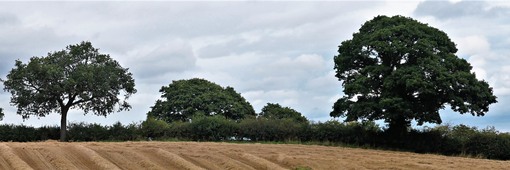

Biodiversity
Action
Plan
Features of hedgerow habitat
Hedgerow bushes support feeding and breeding, and give shelter and protection from predators, for many mammals and birds.
A number of lower plants, fungi and invertebrates are associated with hedgerow bushes and trees, especially when mature or veteran
Trees and bushes in the hedgerow support a large number of lichens as well as feeding habitat for invertebrates (for example, the White-letter Hairstreak on elm), and roosting/nesting habitat for birds (for example, Tree Sparrow) and bats. Many species, including Spotted Flycatcher and Bullfinch, require both trees and scrub.
A number of bat species use hedgerows for foraging for flying insects and loss of hedgerows restricts routes from roosts to feeding areas.
The base of hedgerows is important for: herbaceous plants, fungi, a number of birds (for example, Grey Partridge, Yellowhammer which nest close to the base of hedges) and amphibians / reptiles (for example Common Toad, Great Crested Newt and Grass snake which move along, forage within and over-winter in the base of hedgerows and associated ditches).
As well as the hedgerow itself, herbs and grasses close to hedgerows on the hedge-bank provide nectar and pollen for bumblebees, seeds and invertebrates for birds, and shelter and cover for mammals and amphibians/reptiles.
Many of these species rely on both the hedgerow and the adjacent habitats to complete their life cycles. As such the quality of the hedgerow and the hedge-bank are very important.
A matrix of open fields, scrub, and woodland are required by a number of species, particularly mammals and birds which need an abundance of invertebrate and/or plant food and these range over larger areas.
The best hedgerow habitats include older trees; a number of woody species; and a broad grassy margin.
Tall, overgrown hedgerows will lose their shrubby base vegetation, become gappy and turn into scrub or a line of trees.
Species supported by hedgerows in Barnsley
Hedgerow trees and shrubs
The most abundant hedgerow tree or shrub in Barnsley is Common Hawthorn, but a variety of other tree and shrub species is often present, including Ash, Blackthorn, Dog-rose, Elder, Field Maple, Hazel, Holly, Oak and Wych Elm.
Midland Hawthorn, Spindle and Wild-service tree occasionally occur.
Ground flora
The more diverse hedges include a variety of typical woodland or woodland edge plants, such as Honeysuckle, Dog's Mercury, Red Campion, Wood Anemone, Primrose and Bluebell.
Mammals found in hedgerow habitats include Badger, Hedgehog, Brown Hare, as well as mice, voles and shrews.
Bats:
Common pipistrelle bats make extensive use of hedgerows; Soprano Pipistrelle however only make similar use of hedgerows with trees.
Bird: Hedgerows are especially important for farmland birds. Birds supported by hedgerows include: Bullfinch, Dunnock, Grey Partridge, Linnet, Song Thrush, Tree Sparrow, Yellowhammer, and Spotted Flycatcher, with Barn Owl sometimes hunting alongside
Amphibian/Reptile: Common Toad, Great Crested Newt,
Reptile: Grass Snake
Butterfly: White-letter Hairstreak

Hedgerow Features